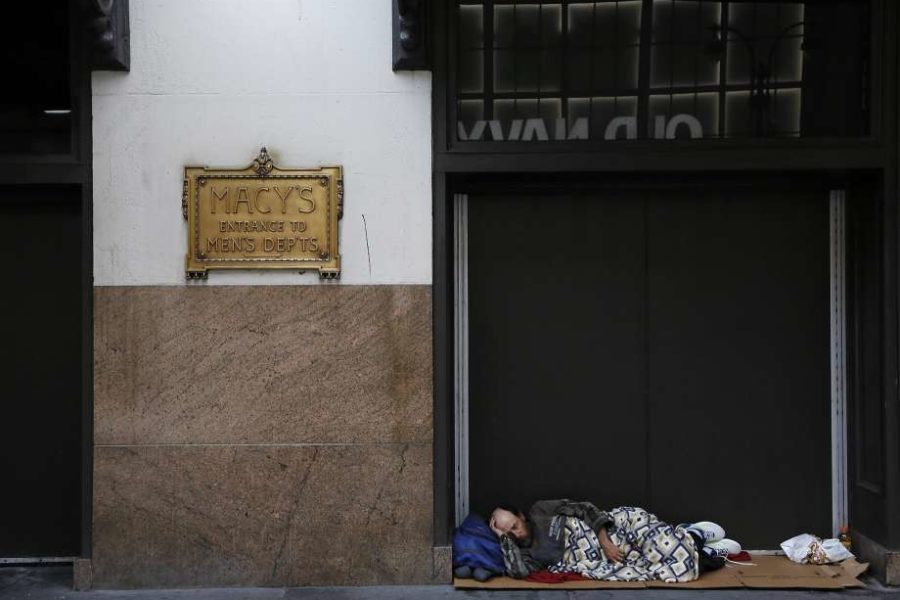In 1990, at the age of 29, I put together a small team to rescue a crumbling, bankrupt 1920s hotel in New York’s Times Square. The building was essentially a burned-out and infested flophouse, but our determined bunch restored it to its original splendor, eventually creating 652 studio apartments for low-income New Yorkers, especially those exiting homelessness.
Supportive housing was a largely new concept at the time, and most people doubted that our tenants could ever really transition back into stable society. But with a combination of on-site medical and supportive services and an incredibly dedicated staff (over-represented by cheerful young Jesuit Volunteers), the Times Square Hotel was a success from Day 1. Our team then went on to develop nearly 3,000 similar housing units in and around New York.
Yet, one morning in the early 2000s, I reached a painful realization on my way to work. As I looked around at the faces of those still experiencing homelessness in our Times Square neighborhood, it occurred to me that I recognized nearly all of these people. Many of them had been living outside on these same street corners years earlier when we first opened our doors, yet here they still were homeless in the shadow of our flagship, award-winning, supportive-housing building.
We had made a classic mistake: We had insisted that our buildings were a solution to homelessness, but we had no real understanding of the broader ecosystem in which they functioned. Our decisions about who to help had been essentially random, and we had remained more or less ignorant of the true scale of homelessness in New York or how our strategy stacked up to the actual need over time.
Over the next 10 years, our team changed course. We focused on the steps leading up to housing, not just housing itself. We shadowed people experiencing homelessness as they went from appointment to appointment, mapping what we found and slowly untangling the complex web of agencies and organizations responsible for helping people escape the streets.
We learned two things:
- All the housing and social services in the world wouldn’t end homelessness if those elements could not be coordinated, streamlined and measured.
- We would never truly end homelessness until we could identify each person experiencing it by name and connect them to assistance targeted to meet their unique needs.
Today, we’ve worked with more than 200 communities to explore and refine these powerful insights. We’ve learned a great deal in each place, and signs of progress are everywhere, but it’s clear that the most successful communities are doing these three things differently from everyone else:
They pay for the outcomes they want. For too long, government has paid nonprofits for services rendered, rather than the end result of those services. This misguided arrangement has created a perverse system in which local nonprofits often benefit from homelessness, rather than accepting responsibility for ending it. That’s easy to change if cities are willing to renegotiate their housing and social service contracts.
They don’t just gather data in the aggregate. They coordinate across their shelters, service providers and street outreach teams to identify every person experiencing homelessness by name, assess and document their specific needs, and follow them all the way through to becoming housed. These real-time, by-name lists are critical because not all homelessness is alike. As much as 70 percent of people who experience homelessness resolve their crisis within a few weeks. Research shows that this group needs far less support than those with the most complex and long-standing challenges, but without a comprehensive way to account for each person, communities are unable to target their resources effectively. They often end up spending large amounts on people who need only minor help, leaving less money for those with deeper needs.
They turn their by-name lists into multiagency command centers. That means rallying every organization and agency with a role in ending homelessness around a shared, measurable time-bound goal, and then using a by-name list to monitor progress toward that goal monthly. The communities doing this best are tracking five key data points:
- How many people entered homelessness for the first time last month?
- How many exited homelessness for permanent housing?
- How many disappeared or became “inactive?”
- How many previously inactive people reappeared?
- What is the total number of people currently experiencing homelessness?
These three strategies are concrete enough for any community to pursue. At the heart of each is a shift beyond stale technical questions, such as “should we build more affordable housing?” (we should), toward a more nuanced view of homelessness as a rapidly shifting problem that must be tracked, understood and responded to in real time.
The policies communities support and the laws they pass must be integrated into an accountable, coordinated system. Success rests not on how efficiently we can execute a plan but on our ability to achieve measurable results. If there aren’t fewer people homeless this month than last month, we don’t have the system we need.
Rosanne Haggerty is president of Community Solutions. She previously founded Common Ground, which continues to develop affordable and supportive housing in New York City.




